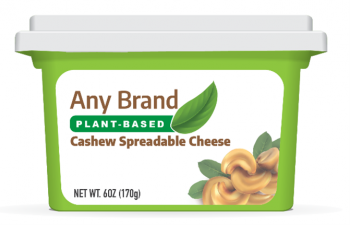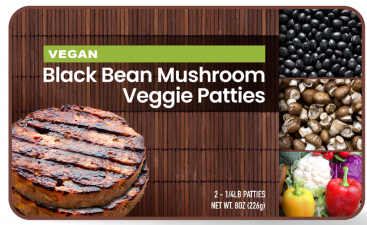Plant-Based Milk and Animal Food Alternatives
What's New
January 6, 2025
The FDA released a draft guidance with recommendations on best practices for naming and labeling certain plant-based foods that are marketed and sold as alternatives to conventional animal products. Submit either electronic or written comments by May 7, 2025.
Plant-based foods and beverages are often marketed and sold as alternatives to conventional animal products. Consumer demand for plant-based alternatives to animal products has increased, and the types and varieties of plant-based alternatives have expanded. Product options are now available that resemble the flavor, form or cut (such as burger or fillet), texture, and appearance of animal foods such as eggs, seafood, poultry, meat, cheese and yogurt, and milk. Consumers purchase plant-based alternatives for various reasons, including dietary choices (e.g., vegan/vegetarian diets), taste preferences, religious practices, and environmental concerns. FDA has published guidance to assist producers of plant-based milk and other animal food alternatives in providing consumers with clear labeling to help them make more informed dietary choices.
This page contains information on FDA guidance for labeling:
Plant-based products that are marketed and sold as alternatives to milk are made from nuts (including hazelnuts, walnuts, cashews, and almonds), seeds (including sesame, flax, and hemp), rice, coconuts, oats, or legumes (including soy). The composition of these plant-based milk alternative (PBMA) products, including their nutrient profiles, varies depending on the plant source, processing methods, and added ingredients.
PBMA products, such as soy, almond, and oat beverages, are often used the same way as milk. But the Dietary Guidelines for Americans currently only include fortified soy beverages in the dairy group because they have key nutrients similar to those found in milk. The Dietary Guidelines recommend When shopping for PBMA products at the grocery store, it’s a good idea to take a look at the Nutrition Facts label and choose products that are higher in protein, vitamin D, calcium, and potassium and lower in saturated fat and added sugars.
Regulatory History
In February 2023, the FDA issued draft guidance that notes that common or usual names of some PBMA, such as “soy milk” and “almond milk,” have been established by common usage. It also includes the FDA’s draft recommendation for PBMA products that are labeled with the term “milk” in their names, such as “soy milk” or “almond milk,” and that have a nutrient composition that is different than milk, include a voluntary nutrient statement that conveys how the product compares with milk based on the USDA’s Food and Nutrition Service (FNS) fluid milk substitutes nutrient criteria.
The goal of this draft guidance is to assist PBMA producers in providing consumers with clear labeling to help them make more informed dietary choices when it comes to PBMA products.
In September 2018, the FDA requested comments to gain insight into how consumers use PBMA products and how they understand terms like “milk” when included in the names of products made, for example, from soy or nuts. After reviewing more than 13,000 comments, including research studies, the FDA determined that consumers generally understand that PBMA do not contain milk and choose PBMA products because they are not milk. However, many consumers may not be aware of the nutritional differences between milk and PBMA products. For example, almond- or oat-based PBMA products may contain calcium and be consumed as a source of calcium, but they are not included as part of the dairy group in the Dietary Guidelines because their overall nutritional content is not similar to milk and fortified soy beverages. In addition, consumer studies submitted to the docket indicated that many consumers expect that products labeled with the term “milk” in their names (e.g., soy milk) have a nutritional content similar to milk.
In 2019, the FDA held 12 focus groups with nearly 100 participants to explore consumer understanding and expectations related to PBMA products. In these focus groups, the FDA learned that some participants consume PBMA products to replace milk and that some perceive PBMA products as a healthier alternative. And in 2021, the FDA conducted an additional 16 focus groups to explore consumer reactions to several types of nutrition statements for PBMA products.
Additional Information
- Constituent Update: FDA Releases Draft Guidance on Labeling of Plant Based Milk Alternatives
- Draft Guidance: Labeling of Plant-based Milk Alternatives and Voluntary Nutrient Statements
- Food Facts: Using the Nutrition Facts Label to Choose Milk and Plant-Based Beverages
- Consumer Update: Milk and Plant-Based Milk Alternatives - Know the Nutrient Difference
- Press Release: FDA Provides Draft Labeling Recommendations for Plant-based Milk Alternatives to Inform Consumers
The FDA has released a draft guidance for industry on best practices for naming and labeling plant-based alternatives to eggs, seafood, poultry, meat, and dairy, excluding plant-based milk alternatives. This guidance is intended to help consumers understand the nature of plant-based alternative foods, including differences among these products, so they can make informed decisions. The agency is addressing the naming and labeling of plant-based milk alternatives separately and issued a draft guidance in February 2023.
Under the draft guidance, food products that do not have standards of identity must be labeled with their common or usual names. In the absence of a common or usual name, foods should be labeled with an accurate description of the food. Manufacturers may include the name of animal-derived foods, such as “cheese” in the common or usual name or statement of identity of plant-based alternative foods, but the labeling should not suggest to consumers that animal sources are present or have been used as ingredients. Consumers should be able to know the specific plant source(s) in the food product, such as soybeans in “soy-based cheddar cheese” and black beans and mushrooms in “black bean mushroom veggie patties.” Consumers should also be able to distinguish similar products from one another. For example, soy-based alternatives should be distinguished from alternatives that are almond-based. While the predominant plant source(s) should be part of the product name, all plant source(s) must be in the ingredient statement.
The graphics below illustrates how a food could be identified with the plant source(s).


